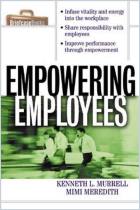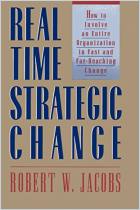Melden Sie sich bei getAbstract an, um die Zusammenfassung zu erhalten.

Melden Sie sich bei getAbstract an, um die Zusammenfassung zu erhalten.
Patricia McLagan and Christo Nel
The Age of Participation
New Governance for the Workplace and The World
Berrett-Koehler, 1997
Was ist drin?
“We want you employees to help make decisions at all levels of our business. Just don’t ask us about that new secret product, that possible acquisition or how much your boss makes.” Sound familiar?
Recommendation
Companies like to say that they encourage their employees to participate thoroughly in the business, but when it comes to actually handing over power to their subordinates, many executives balk. Patricia McLagan and Christo Nel say that companies and bosses that refuse to take the participatory plunge are doomed to extinction. In The Age of Participation, they present the concept of participation – the active involvement of all employees or citizens in every aspect of running an organization – as a worldview, not just a business method. Sure the book contains more than its share of platitudes, but it is never dry. It balances its more utopian pronouncements with some practical observations about the performance of companies that have implemented participatory strategies and some insightful points on the role of common sense in business decision making. getAbstract recommends this book to executives and mid-level managers, particularly change managers and human resource professionals.
Summary
About the Authors
Patricia McLagan, founder of McLagan International, has been a consultant to public and private sector institutions in the United States, England, and South Africa for more than 25 years. She is a professor at RAU University in Johannesburg. Christo Nel has been assisting change in the public and private sectors in South Africa for more than 15 years. He is managing director of ITISA, a consulting firm specializing in workplace democracy. This husband-and-wife team co-founded the Democracy and Work Institute, a research and application center dedicated to assisting public and private organizations become more participatory.























Comment on this summary